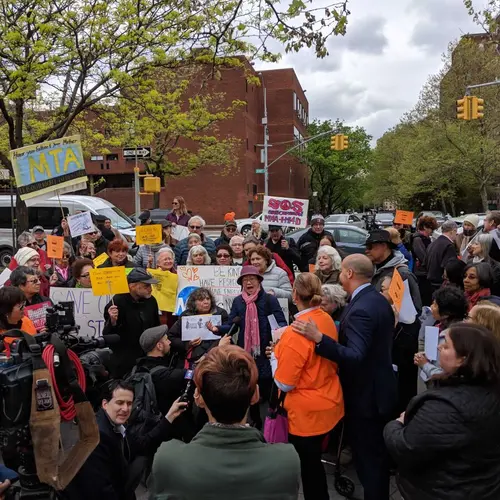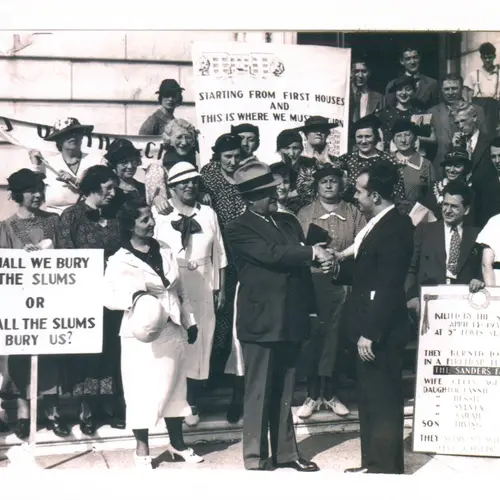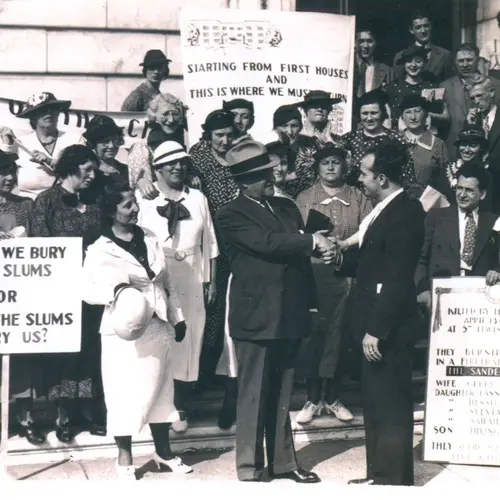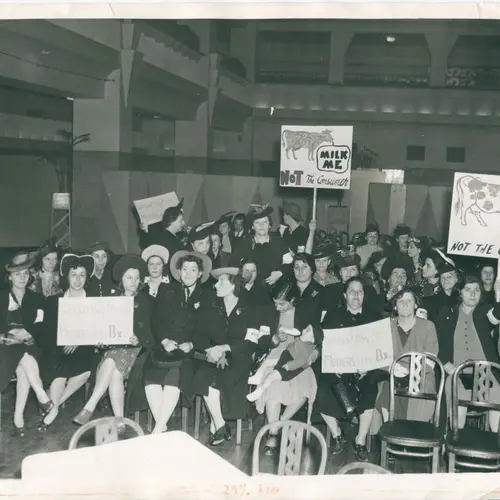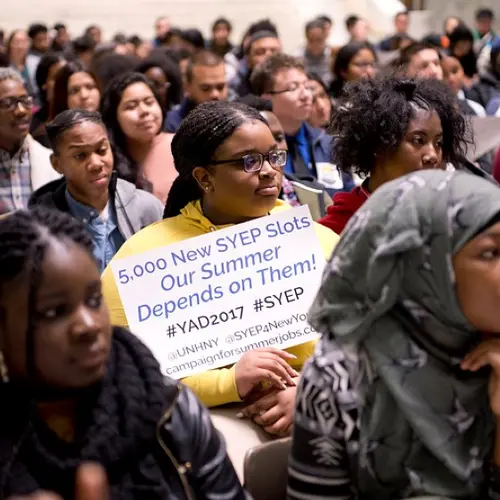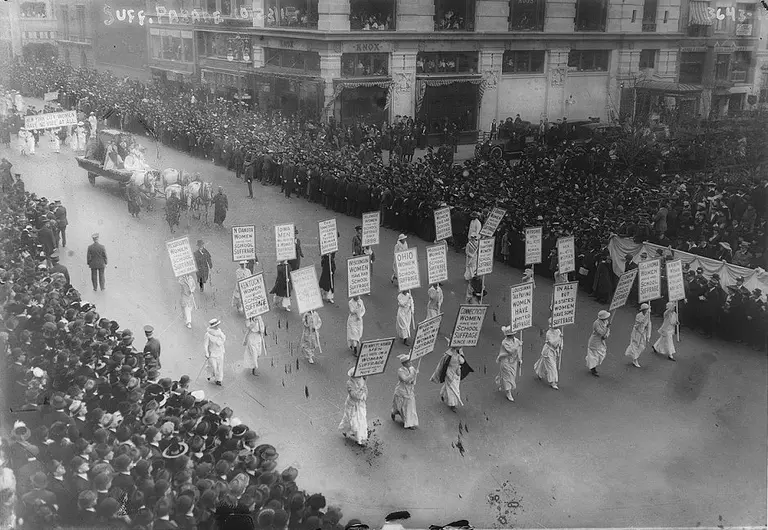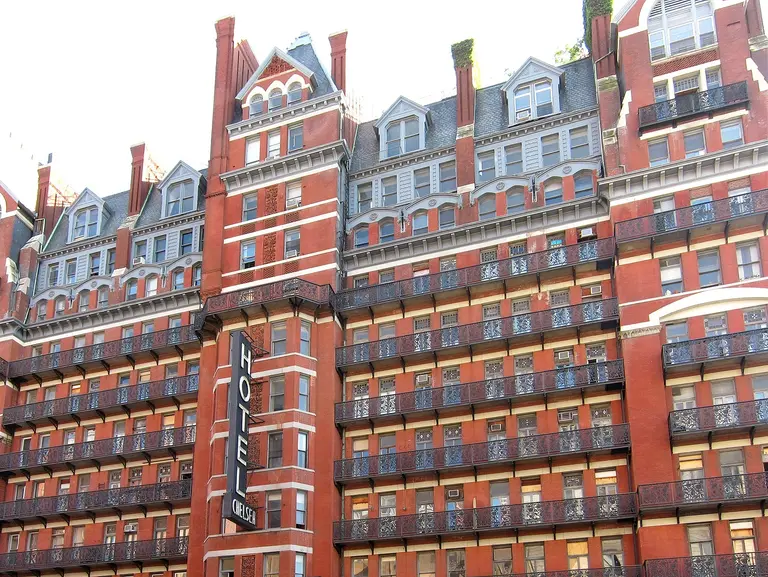The 100-year history of New York’s settlement house collective
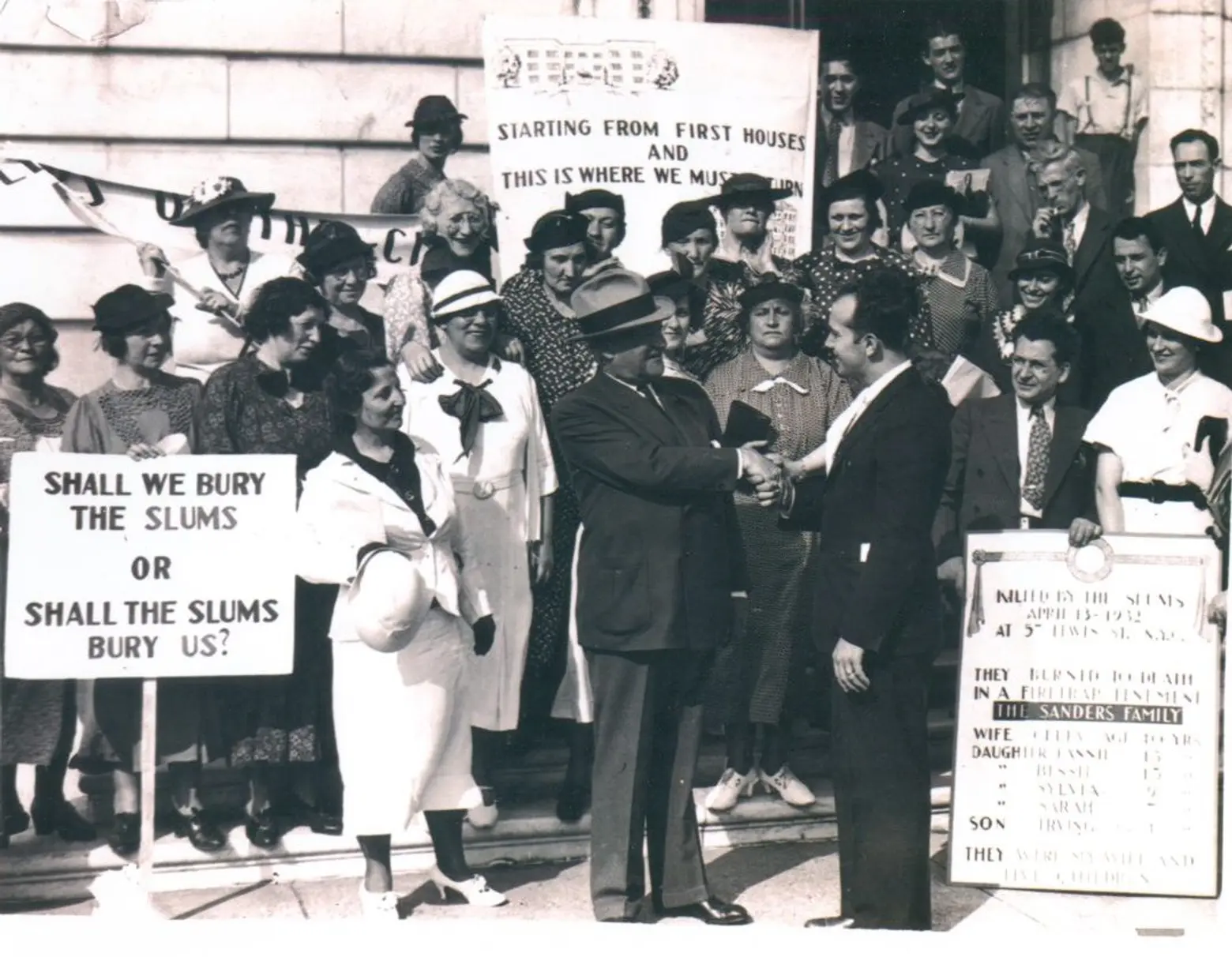
United Neighborhood Houses’ Rally for the Bury the Slums Campaign in 1936
Look back to early 1900s New York and you’ll find a city not only transformed by an influx of immigrants from around the world, but a movement to improve their living conditions. As newcomers to the city increasingly faced poverty, hunger, disease, crime and unsafe housing, community hubs like churches and synagogues began advocating for better living conditions. Settlement houses also played an important role in this movement for social justice. Their initial purpose of bringing more privileged, outside “settlers” into immigrant communities could be controversial, but it also forged bonds between different classes of New Yorkers who fought for issues like housing protections, stronger labor laws, and city sanitation efforts.
Exactly 100 years ago, an organization emerged to better coordinate the efforts of settlement houses and ensure their advocacy into the future. United Neighborhood Houses was the city’s first umbrella organization for settlement homes with the goal to fight for equality and social change. Today the organization exists as one of the largest human service systems in New York City, holding up the city’s still-robust collection of settlement houses. The history of United Neighborhood Houses tells a larger story of the evolving role of settlement houses in New York: why they were introduced, how they integrated — with some bumps — into impoverished communities, and how they’ve grown into community hubs still servicing New Yorkers today.
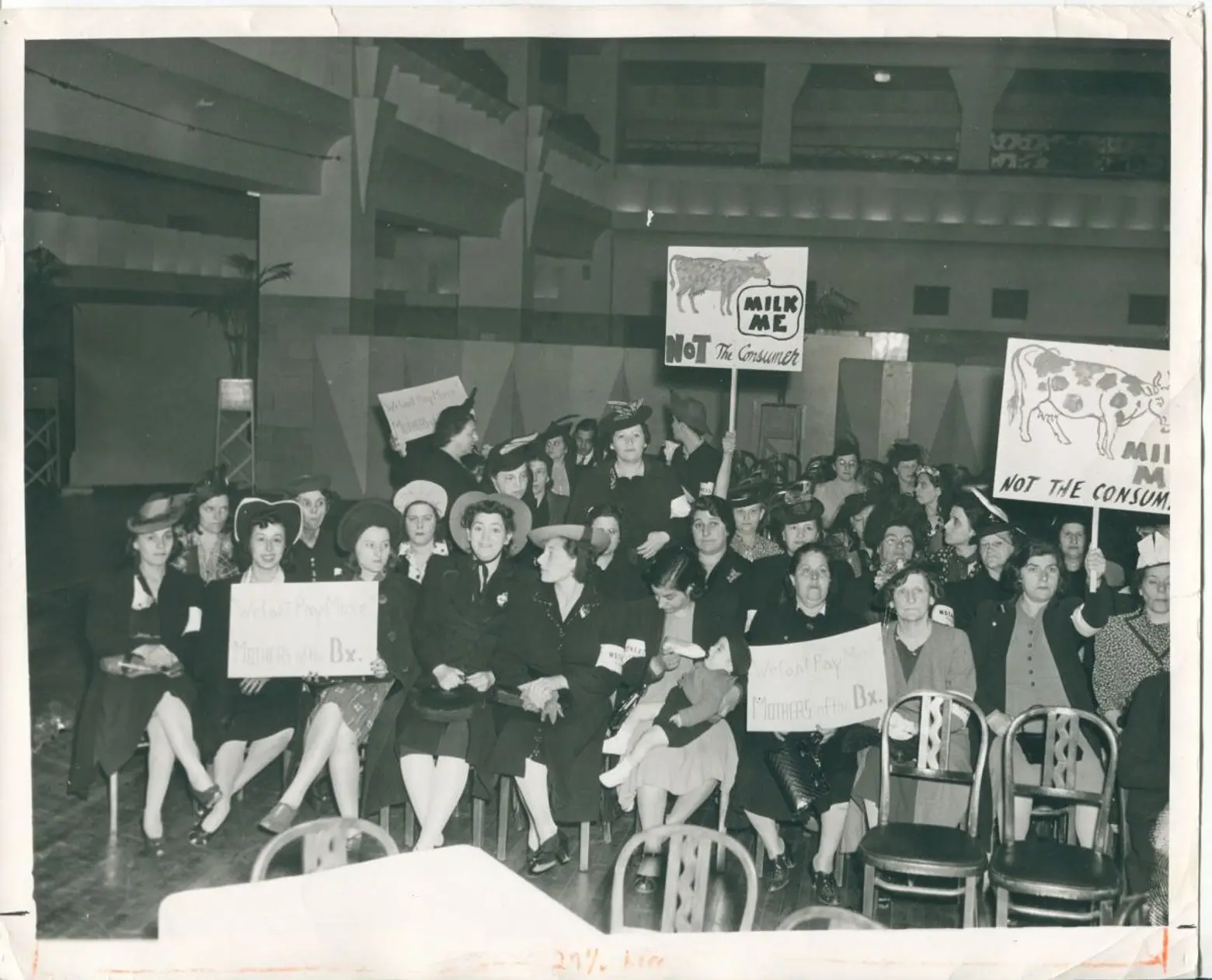 A United Neighborhood Houses’ protest against high milk costs; courtesy of United Neighborhood Houses
A United Neighborhood Houses’ protest against high milk costs; courtesy of United Neighborhood Houses
It’s a story that goes back to the time period between 1880 and 1920 when more than 19 million immigrants came to the United States and transformed the Lower East Side into the most densely populated neighborhood in the world. Immigrants struggled with low wages and dangerous working conditions in places like sweatshops. They faced disease and crime in over-crowded, poorly maintained living conditions.
The first settlement house was in direct reaction to such dire conditions. A group of reformers — Stanton Coit, Charles B. Stover, and Carl Schurz — settled on the Lower East Side to understand its problems. Their response was establishing the country’s first settlement house, University Settlement, in 1886. (The organization does work on the Lower East Side to this day.) It was envisioned as a “physical, psychological and spiritual haven where people of all ages, from all countries and every walk of life could seek advice, assistance, education or a simple respite from the harsh realities of everyday life” — and came to offer public amenities like New York’s first public bath and kindergarten classes.
A number of settlement houses followed: the Jacob A. Riis Neighborhood Settlement House in 1890, the East Side House Settlement in 1891, Henry Street Settlement in 1893 (read about its history here), Lenox Hill Neighborhood House in 1894, Union Settlement Association in 1895, the Hartley House in 1897, Hamilton-Madison House in 1898, School Settlement Association (the oldest in Brooklyn) in 1901, Greenwich House in 1902, Southeast Bronx Neighborhood Centers in 1903 and the Grand Street Settlement in 1916.
They were organized as “friendly and open households,” where members of more privileged classes lived and worked as “settlers” in poor areas of the city, according to the Social Welfare History Project. Settlements had no set program or work method, only an idea that people should commit to “reside” in the settlement house in order to “know intimately” their neighbors.
Not all community members or local service organizations appreciated the “settler” style of service. The Hebrew Standard Newspaper called settlement workers a “horde of professional ‘uplifters’ whose highest ambition, as a rule, is to prate and write glibly about the ‘ghetto people’… the sooner we get rid of them, the better.”
Still, settlement house locations increased and cemented their status as advocacy bodies within marginalized communities. Two New Yorkers — Mary K. Simkhovitch and John L. Elliott — decided to increase cooperation between settlement workers in 1900 with the establishment of the Association of Neighborhood Workers. Simkhovitch was active in New York’s woman suffrage movement and the Social Reform Club, a group that studied and promoted social welfare legislation. In 1902 she became director of Greenwich House, a non-sectarian settlement house. Elliott established numerous clubs and programs which merged into Hudson Guild, a platform to organize residents to improve neighborhood living conditions.
Simkhovitch and Elliott’s goal was to “effect cooperation among those who are working for neighborhood and civic improvement, and to promote movements for social progress.” Association of Neighborhood Workers met monthly in various neighborhoods to discuss pressing social issues of the day. Committees focused on housing, education, public health, highways, labor, public morality, relief (advocating for public restrooms), arts and crafts, parks and playgrounds, and legislation. Early publications distributed to the public include “Report on Midwifery” and “Art for the People.”
Through the early 1900s, the committees followed through on a variety of work. They assisted immigrant women selling their wares, like pottery and embroideries; they petitioned for transportation, street paving, lighting, and garbage-collection improvements; they advocated to raise the legal working age from 14 to 16 as well as raise the legal marriage age for girls to 16.
Their work also cut across the larger settlement house movement. Association of Neighborhood Workers mobilized settlements to cope with the influenza epidemic of 1918, for example, by recruiting doctors and nurses and sharing information on care and prevention. They also encouraged settlement leaders to take public office.
And so in 1919, the group reorganized into a structure closer to United Neighborhood Houses’ present-day form. The association had been based on individual participation of “neighborhood workers” — this new structure shifted the emphasis to the participation of the settlement houses. By now the settlement house movement had overtaken the United States, with more than 400 across the country.
Though United Neighborhood Houses continued to advocate for a variety of issues, housing emerged as a major one to organize settlement houses around. The council led a campaign against slum housing through the 1920s, which included an exhibit modeling old and new law tenements and producing pamphlets like “A Practical Way to Produce a Slumless New York.” They also organized “What the Tenement Family Has and What It Pays for It,” a milestone study of 1,014 tenement families showing income, rent, and housing conditions.
In the 1930s, the collective began seeing successes, particularly in regards to housing reform. “Tenement dwellers from settlement areas went to Albany by bus loads, spoke at public hearings, advocated tenement reform and State support for low-rent housing,” according to the Social Welfare History Project. The city enacted a municipal housing authority bill and Simkhovitch became a charter member of the New York City Housing Authority. Slum housing started to be cleared for low-rent public housing.
As public housing replaced tenements in neighborhoods like Williamsburg, Red Hook and Queensbridge, United Neighborhood Houses advocated for smart planning that included recreation options and community programs. The organization would go on to release a pamphlet in 1946, “Community Relations in Public Housing Project Areas,” that set standards for public housing community facilities.
 United Neighborhood Houses Youth Action Day in Albany in 2017, courtesy of United Neighborhood Houses
United Neighborhood Houses Youth Action Day in Albany in 2017, courtesy of United Neighborhood Houses
Into the mid 20th century, settlement houses — increasingly operating as “neighborhood centers” — continued to form across New York. Lincoln Square Neighborhood Center opened in 1947 as a daycare; the Storefront Y emerged in Manhattan-Brighton Beach in 1950 to serve the Jewish community; the Chinese-American Planning Council formed in 1965 to assist a new wave of immigrants to the city.
It was clear the city still needed the advocacy work of settlement houses, according to a 1966 speech by Dr. Martin Luther King at United Neighborhood’s fall conference. He spoke to the crowd about poverty, the efforts to combat it, and the need for more government programs to assist the poor.
As the federal government did expand support for social services and community-based nonprofit programs, settlements thrived, according to the Gotham Center. During this time United Neighborhood Houses oversaw a transformation of settlement houses into publicly funded social service providers. Some critiqued that settlement houses were losing their unique place in communities and distinct sense of mission. But the new role, in many ways, ensured organizations would survive a changing New York.
Even in a new role, settlements-turned-neighborhood centers were at the forefront of local advocacy. The 1980s homelessness crisis prompted the Henry Street Settlement (which to this day is a member of United Neighborhood Houses) to create the first service-centered shelter for families to help them transition back to permanent housing. The model expanded across the country and is used to this day.
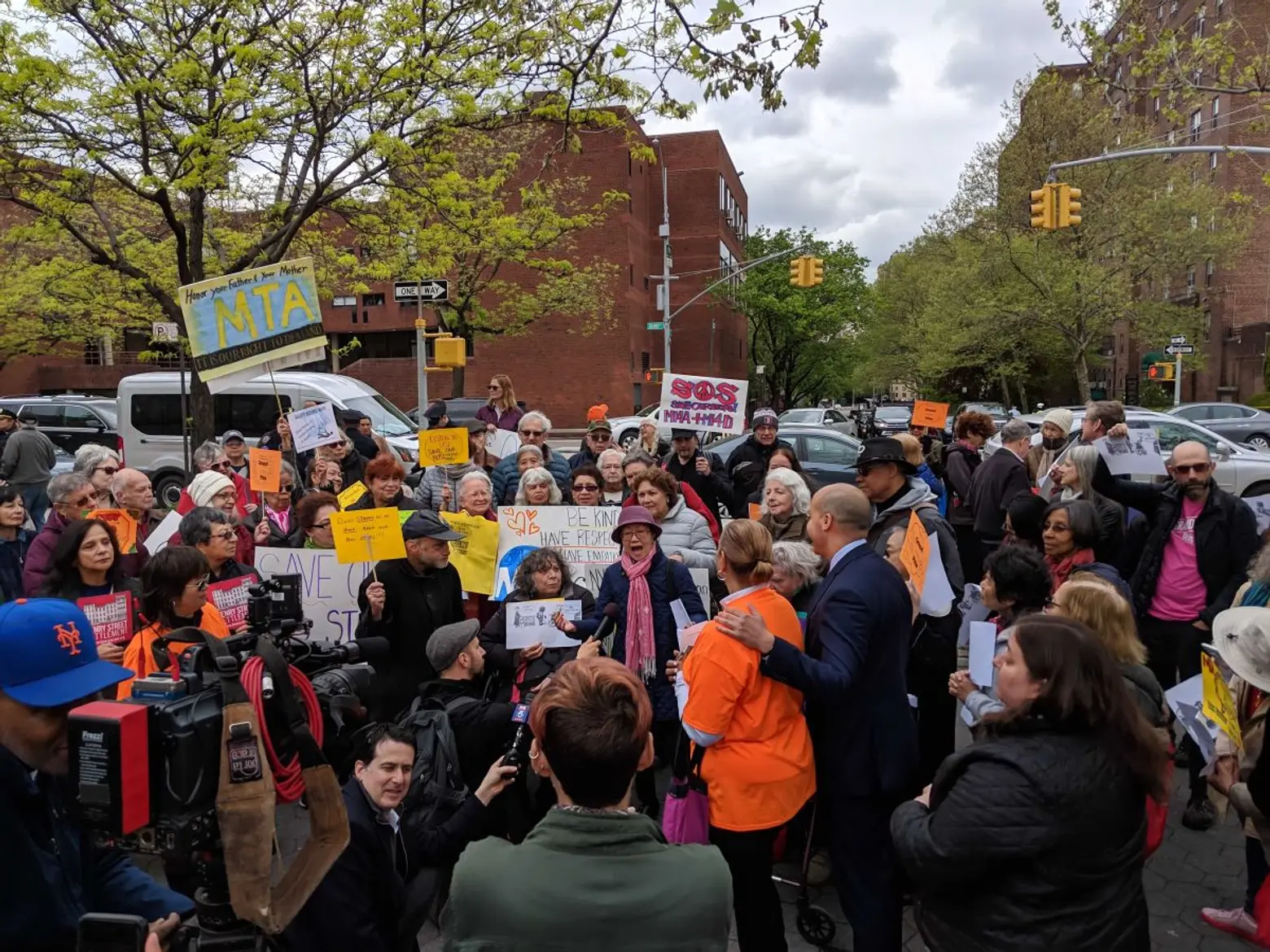
The senior advocacy leadership team of United Neighborhood Houses in 2018; courtesy of the United Neighborhood Houses
And every year since 1919, United Neighborhood Houses has been able to maintain itself as a settlement collective. Today, the organization represents 42 neighborhood settlements that reach 765,000 New Yorkers. As Gotham Center puts it, they “no longer have workers living as residents, they receive more public than private funding, and they no longer see creating cross-class relationships as central to their mission.” But United Neighborhood Houses’ executive director Susan Stamler has been able to track some common themes across the organization’s history.
Job skills have remained a crucial tenet for settlement houses — only now there’s a focus on technology. Children remain a priority, but what was once a movement to establish child labor laws has evolved into securing salary parity for early childhood educators, a success of settlement leaders earlier this year.
Settlement houses haven’t given up their advocacy for safe and affordable housing, either — after promoting the construction of public housing in the 1930s, now settlements work with public housing residents to advocate for safe living conditions. “Settlement houses are still holistic in nature,” says Stamler. “They really are the front door of their neighborhoods.”
One of the most important outcomes surviving 100 years in New York City, Stamler adds, is that “settlements have become trusted parts of their community.” She stresses how important their role remains in modern-day New York, as residents continue to advocate for affordability, immigrant rights, and safe, secure housing.
Big priorities in the future, according to Stamler, are organizing around the 2020 census and engaging New Yorkers for the 2021 election year, when New York will nominate a new mayor and governor. (United Neighborhood Houses operates as a non-partisan organization.) “We’re increasing ways to bring people together,” she says, “To make sure the voice of every New Yorker is heard.”
RELATED:
